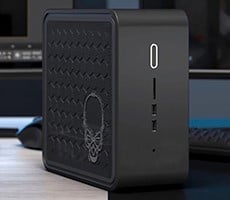Dell XPS 18 Portable All-In-One Desktop Review
![]()
Tablets have made their mark on the casual computing sector, and if you're used to using an iPad or an Android slate, you may find yourself instinctively wanting to reach out and tap your non-touch capable laptop. That obviously isn't a problem with the XPS 18, which sports a bright and vibrant 18.4-inch IPS multi-touch IPS display with a Full HD 1080p (1920x1080) resolution. This is an important feature to have on an AIO system, especially one that's powered by Windows 8.
What's neat about the XPS 18 is that you can pick up the display and take it with you to the living room, bedroom, or even the bathroom if you've run out of shampoo bottles to read. Unfortunately, it's too big and heavy (around 5 pounds) to serve as a legitimate tablet replacement, and you'd look awfully silly lugging this sucker on the bus. It's also an expensive piece of equipment, and since it's somewhat unwieldy because of its size, there's a greater risk of dropping it than there is with a Nexus 7 or something of that nature.
Dell doesn't want you to view this as a hybrid tablet/desktop, however, which is why it's billed as a portable AIO. Unlike a traditional AIO, you can pick up and move the XPS 18 from one location to another with relative ease. If you want to surf the web from the couch after work hours or read and e-magazine from bed before turning the lights out, the XPS 18 will accommodate, provided you're comfortable with an 18.4-inch display on your lap. Alternately, this type of system opens the door to tabletop computing, something OEMs are excited to push, though we have our reservations that families are actually going to sit down and play on this thing versus blowing each other up on Xbox. Should there be a market for tabletop computing, however, the XPS 18 is poised to take advantage of it.

There are some notable shortcomings you should be aware of when considering this system. It lacks HDMI connectivity, doesn't have an Ethernet port, and there's no optical drive built in, though the same can be said for most Ultrabooks these days. And if you're the type that likes to do your own repairs and upgrades, this isn't the AIO for you, as it inherited the tablet's DNA when it comes to user serviceability.
Wrapping up what's becoming a long-winded conclusion, we like many more things than we don't about this system. It's one of the first and few hybrid designs that's more functional than gimmicky, and because of it's Ivy Bridge foundation, there's plenty of power for general purpose computing and even some gaming. If the flexibility of a detachable, portable 18-inch tabletop PC appeals to you, this system has your name all over it.

|
|
|
|
|







